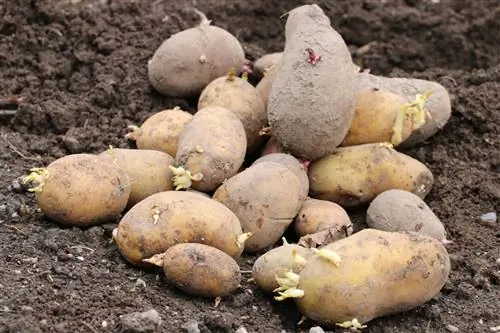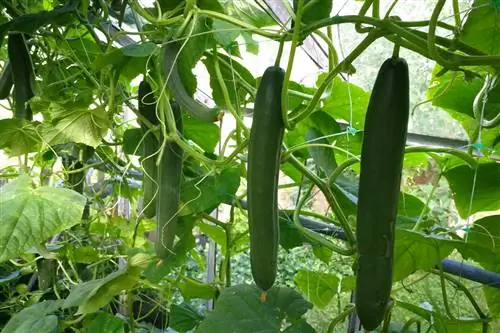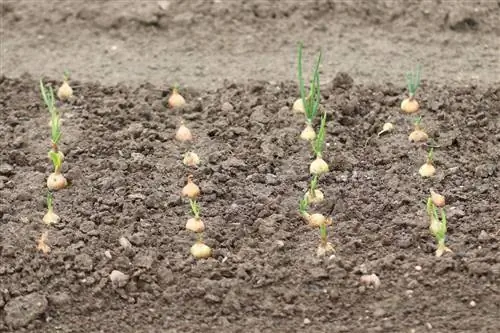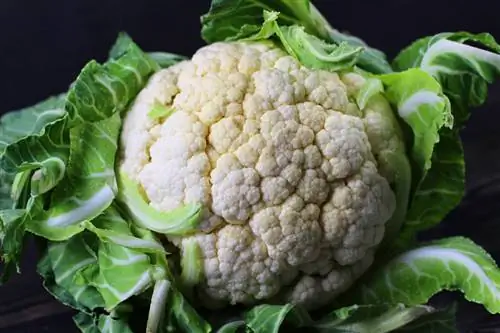- Author admin [email protected].
- Public 2023-12-17 03:39.
- Last modified 2025-06-01 06:48.
Potato plants arranged in rows are often found in allotments. But potato cultivation is more efficient in mixed culture! We present 14 plants that get along excellently with potatoes and increase yields.
Mixed culture for more yield
Allotment gardeners and farmers have been relying on mixed culture to grow crops for generations. Different plants in an area influence each other. This influence can have a positive or negative effect on plant he alth and yield.
Advantages of mixed culture:
- Bed areas are used optimally
- positive influence on soil quality
- Pest repellent
- Attracting pollinating insects
- Reducing soil leaching
- Protection against drying out
- Reducing Weeds
Good planting neighbors A - K
Cauliflower (Brassica oleracea)
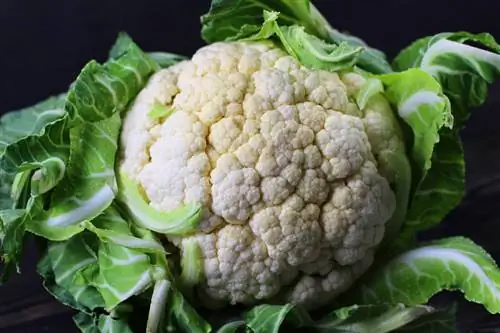
Cauliflower and potatoes make a good team. They have similar demands. The two heavy feeders should not be grown in the same location for several years.
Beans (Phaseolus vulgaris)
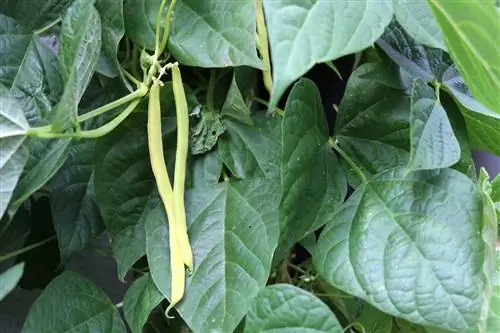
Green beans, broad beans, red beans and even runner beans harmonize perfectly in a bed with potato plants. They have similar requirements and don't get in each other's way above or below ground.
Borage (Borago officinalis)

Plant borage at the edges of potato beds. The plant with blue flowers attracts bees and beneficial insects and improves the soil.
Dill (Anethum graveolens)
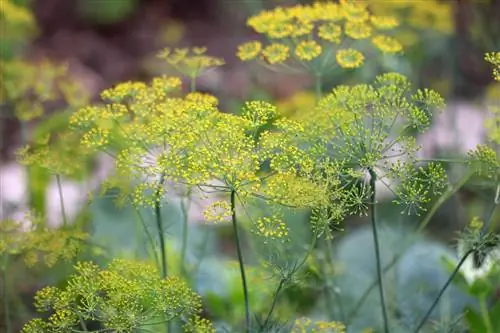
Dill supports potato plants in their growth. The popular culinary herb increases the germination of potatoes and successfully repels pests and fungal diseases.
Nasturtium (Tropaeolum majus)
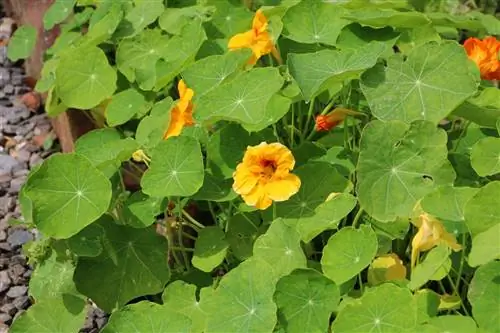
The nasturtium with its bright flowers is pretty to look at. It attracts pollinators and keeps aphids away.
Garlic (Allium sativum)
Garlic and potatoes develop excellently together on the same bed. Garlic protects potato plants from fungi and repels voles.
Coriander (Coriandrum sativum)
Coriander attracts beneficial insects and successfully repels pests such as the Colorado potato beetle. Sow coriander between the potato rows.
Note:
Check your potato plants regularly for Colorado potato beetles and collect them immediately.
Caraway (Carum carvi)
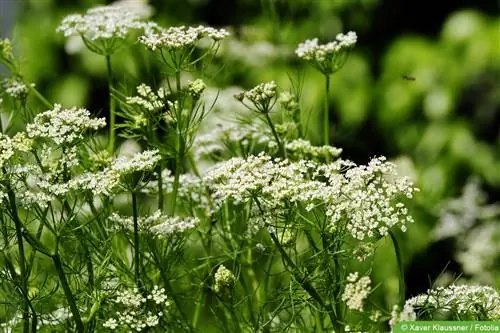
If you sow caraway seeds between the rows of potatoes, you can look forward to particularly tasty tubers. Just like coriander, caraway when mixed with potatoes enhances the taste.
Good planting neighbors M - Z
Horseradish (Armoracia rusticana)
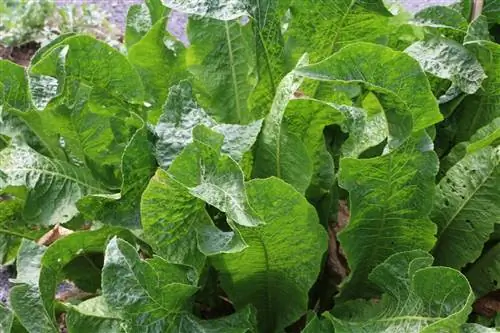
Horseradish is well suited to being mixed with potatoes. The plant with long, sharp roots repels Colorado potato beetles.
Peppermint (Mentha x piperita)
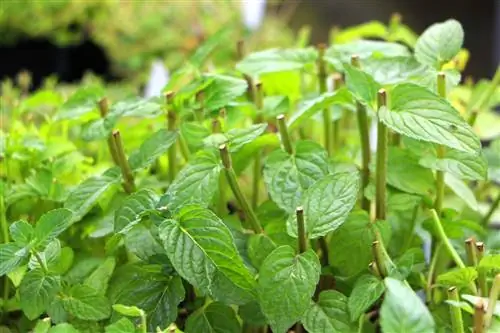
Peppermint planted between the potatoes creates a carpet of green that prevents the bed from drying out. Use planting baskets to prevent peppermint from spreading uncontrollably. The purple flowers of peppermint attract bees, butterflies and beneficial insects.
Marigold (Calendula officinalis)

Don't forget to sow some marigolds in the garden. The attractive flower gets along with all types of vegetables and promotes their growth. Wireworms and nematodes are successfully repelled by marigolds. Butterflies, bees and bumblebees will visit your beds all the more often.
Shallots (Allium cepa var. ascalonicum)
Shallots are the noble alternative to ordinary onions. They have similar location requirements as potatoes.
Chives (Allium schoenoprasum)
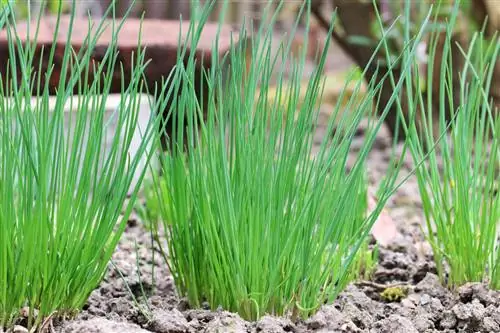
Chives are a must in any vegetable garden. The purple-flowering chives magically attract bees and beneficial insects. Colorado beetles, on the other hand, can't stand the popular culinary herb. Sow chives between the potatoes and the pests will stay away.
Student flower (Tagetes)
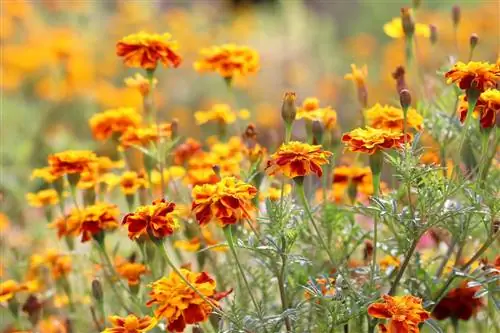
Student flowers are not very popular due to their unpleasant scent. The reason they are still often found in gardens is their deterrent effect on pests. Tagetes repels nematodes, whiteflies and the wireworms feared by potato lovers. Marigolds planted between potatoes prevent late blight.
Crop rotation
With a three-year crop rotation, we recommend starting potatoes withheavy feeders(cauliflower), then withmedium feeders(garlic) and in the third year withWeak foods (beans, herbs). This is followed by green manure with savory or alfalfa and the soil can recover.

